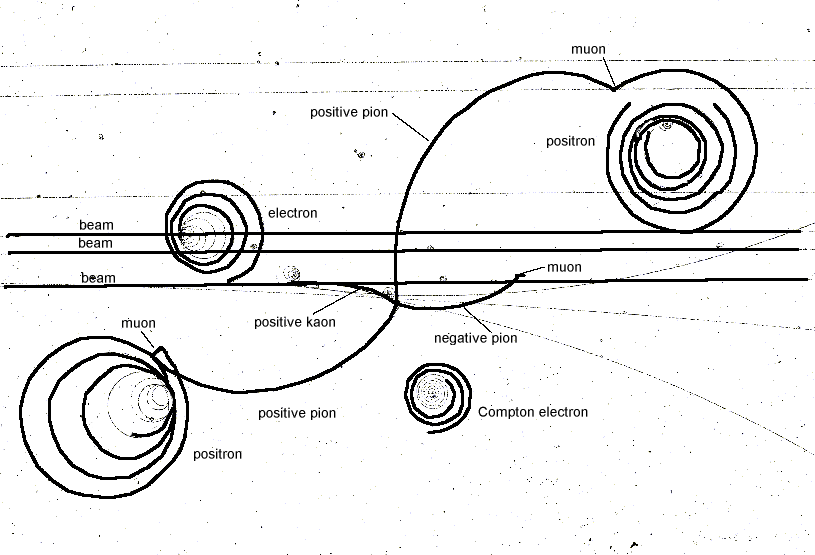
A spectacular example of a K+ decaying to 3 pions - 2 positive and one negative.
Each pion then stops and decays to a muon - a short track because the momentum of the muon is only 30 MeV/c. (This can be calculated from energy and momentum conservation - relativistic.) Such a low energy muon travels only about a centimetre in liquid hydrogen before it stops.
Then, two of the muons decay to spiralling tracks - characteristic of electrons and positrons. The third appears not to do this, but this is because the muon track has ended in the glass wall of the bubble chamber!
It is very rare to see so many decays on one picture. Usually the particles leave before they have time to decay.
The picture also contains a clear example of an electron knocked out of an atom by a gamma ray photon - a Compton electron. This is a lone spiralling track beginning on the outside and gradually closing up.
A similar spiral can be seen beginning on one of the parallel incoming K+ beam tracks. This is an electron that has been knocked forward, hardly influencing the motion of the K+; it is known as a `knock-on electron' or `delta ray'.
Extra information: pions decay into two particles only, a muon and a neutrino; muons decay into three particles, an electron and two neutrinos. For further details about these decays see the signatures in bubble chambers.